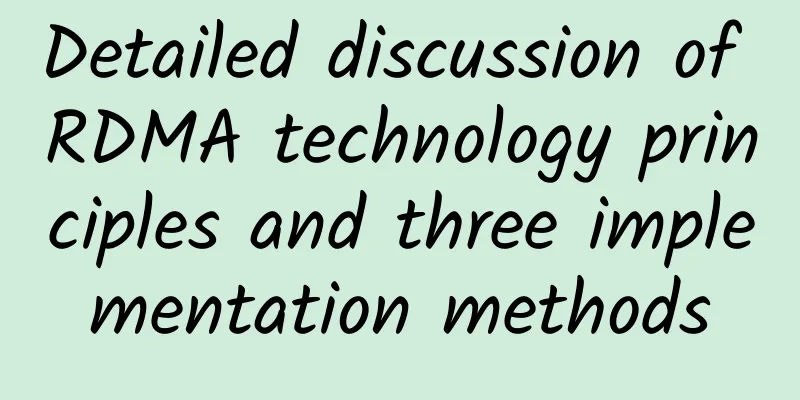7 ways to understand the 5G standards in June

|
As the main candidate technology for IMT2020, 5GNR is moving forward rapidly under the unified coordination of 3GPP. According to the plan, the first 5G standard will be frozen this year, which will provide operators with a feasible solution for the initial deployment of 5G. 5GNR is the abbreviation of 5G New Radio. It is the hottest research and development focus in today's communications industry. In addition to competition among enterprises, the competition in industrial policies between countries is also very fierce, and the spectrum is a battlefield for direct confrontation. It seems that 5G has 1G more than 4G, but in fact, the sentiment of 5G is much greater than that of 4G. It can be said that 4G is still in the final stage of quantitative change, while 5G has undergone a qualitative change. In the current popular saying, a "structural" change has occurred. In addition to further improving user experience and reducing traffic costs based on the mature traffic consumption business model (eMBB), 5G also targets the Internet of Things and vertical industries, including massive machine communication (Mmtc) Internet of Things and mission-critical (uRLLC) services. See the following figure for ITU's description of the service types of IMT2020 technology: ▲ Source: ITU Recommendations09/2015 The first version of the 5G NR standard (3GPP Release 15) will support enhanced mobile broadband (eMBB), and also plans to support some URLLC functions. mMTC may be included in the second version of the 5G NR standard. NO.1 New spectrum and new bandwidth will introduce more signal quality issues ▲ Source: GSA Report Feb 2017 Business needs in the next 5-10 years will require 5G to provide higher speeds. For example, online games and streaming content distribution, etc., are currently limited by 4G technology and can only provide image quality at lower resolutions. If you are a mobile game enthusiast, even if you can tolerate images with obvious jaggedness, you will not tolerate the regret of others PKing out your game character while you are waiting for the freeze. No matter how good the mobile phone signal is, the delay is generally tens of milliseconds, and there will still be a noticeable delay. When most people realize this, the 5G future is here. In order to achieve higher speed and lower latency, 5G plans to use wider bandwidth signals and higher spectrum. As of now, the global spectrum range defined by 5GNR Release 15 has reached 52.6GHz, and more spectrum is sought within the 100GHz range. The subcarrier bandwidth has reached 400MHz, and even larger bandwidth can be achieved through carrier aggregation. At the same time, the degradation of signal quality due to path loss, flatness, phase noise, linearity and other issues is a difficulty and challenge that 5G must correct. NO.2 Advanced beamforming technology requires system-level design In order to further improve spectrum efficiency and overcome propagation loss, 5G large-scale antenna base stations generally use beamforming technology. The base station needs to find the mobile phone through beam scanning, and then the mobile phone and the base station establish business interaction through the business beam signal. This is a very attractive design, but of course it is also very complicated to implement. Whether the beam uses the same frequency or different frequencies, beam parameters, signal quality, end-to-end performance, OTA RF performance, etc. seem to be simple issues, but in fact, they must be considered from the system design and simulation stage. A successful system design can significantly reduce the risks at all stages of the product life cycle. NO.3 Waveform and variable parameter set affect signal peak-to-average ratio 5G NR Release 15 uses CP-OFDM waveform and can adapt to flexible and variable parameter sets. Variable parameter sets can multiplex services of different levels and delays and allow larger subcarrier spacing in the millimeter wave band. Since the signal no longer maintains orthogonality, it introduces the problem of large peak-to-average ratio and subcarrier interference. In the uplink channel, the UE's transmit power is limited and the power efficiency requirement is high, so the DFT-S-OFDM waveform is used to reduce the peak-to-average ratio of the signal. No.4 Millimeter wave requires OTA testing The frequency band of 5G has been extended to millimeter waves. While enjoying the advantages of large bandwidth and rich spectrum resources of millimeter waves, it also faces the problem that traditional test methods are no longer applicable. Typical millimeter wave base stations, with integrated antennas and chips and antenna array spacing at the millimeter level, are no longer suitable for conduction testing in frequency bands below 6GHz. New OTA air interface testing is imperative. An economical compact field solution provides a good choice for low-cost 5G testing. NO.5 Dual-connection, multi-standard signal coexistence interference problem In the early stages of 5G, there are scenarios where 5G will coexist and connect with LTE systems at the same time. 3G, 2G, Wifi, BT and other signals will still exist for a long time after 5G is commercially available. Due to spectrum fragmentation, the problem of signal coexistence interference is becoming more and more obvious. It is necessary to strengthen monitoring and evaluation of harmonics, spurious signals, adjacent channel interference and other issues. NO.6 Core network changes: intelligence, cloud, and virtualization 5G services are more diverse, requiring the core network to be more flexible, intelligent, and reconfigurable. 5G network slicing technology is used to cope with service diversity, reduce network costs, and enable operators to dynamically optimize network parameter configurations for a certain service or region, thereby improving network capabilities and real user experience. Cloud RAN concentrates baseband processing capabilities in the cloud, which is very effective in reducing power consumption and dynamically optimizing network capacity. NO.75G innovation is still on the way The structural changes of 5G will push wireless networks to a wider range of business scenarios. Massive antennas, beamforming, millimeter wave technology, network slicing, etc. are all new technologies introduced to meet new business needs. However, the innovation of 5G has not stopped. Facing the new business needs and new business models brought about by social progress in the next 10 years, 5G will continue to introduce new technologies, which will also bring huge opportunities to us in communications. |
>>: Chinese companies account for more than 30% of global 5G standard patent declarations
Recommend
Can you afford a 5G terminal that costs over 10,000 yuan?
Everyone wants to be the first to experience the ...
Can mobile phone numbers still be used normally if virtual operators go bankrupt? MIIT responds: Basic telecommunications companies will take over
[[422542]] According to the Gongxin Micro Newspap...
F5 and H3C Sign SDN Solution Cooperation Agreement
Recently, H3C, a leading manufacturer in the IP n...
What is SD-Branch? Why do you need it?
[51CTO.com Quick Translation] The deployed SD-WAN...
DesiVPS: $3/month-2GB/20G SSD/2.5TB/San Jose & Netherlands Data Center
DesiVPS is an Indian VPS hosting provider headqua...
[11.11]DogYun: 30% off on Elastic Cloud/20% off on Classic Cloud, get 1 yuan free for every 11 yuan you recharge, 100 yuan off for a dedicated server per month
DogYun also officially released the promotional a...
HTTP request headers - the basics you need to remember
Introduction Usually HTTP messages include reques...
Sharktech: 1Gbps unlimited traffic from $79/month, 10Gbps unlimited traffic from $329/month, data centers in Los Angeles/Denver/Netherlands
Sharktech (also known as Shark Data Center, SK Da...
Application of multimodal algorithms in video understanding
1. Overview At present, video classification algo...
XDP technology for high-performance network framework
1. Basic Concepts of XDP XDP stands for eXpress D...
The Ministry of Industry and Information Technology revised the project plan for industry standards such as artificial intelligence
According to the overall arrangement for the form...
Little-known trick! How to draw a standard square in Excel
I turned on my computer and opened my beloved Exc...
DigitalVirt: 95 yuan/year-1GB/10GB NVMe/1TB@200Mbps/Hong Kong International Line
DigitalVirt recently offered a 50% discount coupo...
Huawei launches intelligent data solution FusionData to unlock data value
[Beijing, China, June 5, 2019] Huawei released it...
edgeNAT July Promotion: 20% off for monthly VPS and 30% off for annual VPS starting from 48 yuan/month, available in China, Hong Kong, and South Korea
edgeNAT has launched a promotion for this month. ...









